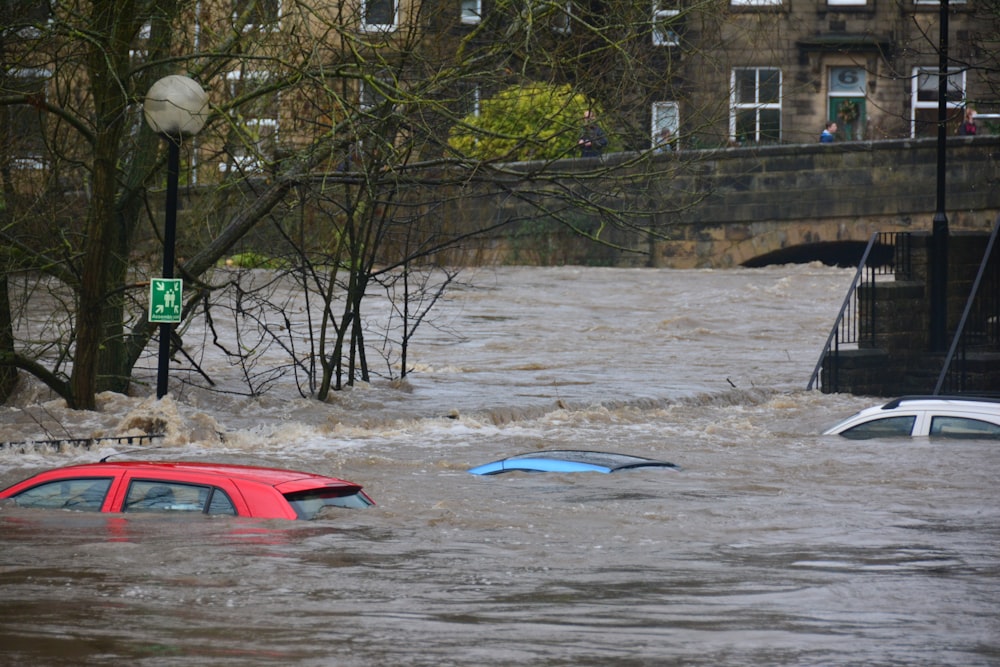
Floods are nothing new to Mumbai but this July started off with abrupt dumping of rain which brought even the city that never sleeps to a grinding halt for a couple of days. In spite of this, the city was back to normal functioning even while many areas like Sion and Hindmata remained closed. This scenario repeated itself over the weekend.
The Downpour
25th July saw extremely heavy rains all across Maharashtra. Mumbai and Thane district saw heavy and consistent rainfall throughout the weekend. Thane and its surrounding areas were the worst hit over the weekend by the flooding.
Traditional flood-prone areas like Sion, Santa Cruz, Panvel and Saki Naka saw moderate flooding. However, the Airport was the worst affected. High-speed winds grounded 11 flights and a luggage carrier was actually picked up and hit a Vistara plane. Unlike normal Mumbai flooding news, however, the Bruhanmumbai city area was left rather unmolested. The Mumbai Metropolitan Region, however, saw excessive flooding. Kalyan, Ulhasnagar, Ambernath, Badlapur and Murbad all received 300 mm rainfall in a window of 24 hours. The Mahalaxmi Express had to be halted as it could not possibly travel further into the flooded area and all passengers have since been rescued.
As a result, the Bhatsa, Kalu and Ulhas rivers all promptly flooded. The dams in these regions were already full from the earlier rains in July and were completely unprepared for the sudden downpour.
The Spirit stays Afloat
Unlike a normal weekday flood, when Mumbaikars are usually caught in the office or at work, this over the weekend flooding was a change. Most people were at home and have stayed relatively safe. NDRF teams have evacuated certain areas where the flooding has reached dangerous levels.
If one had to understand why people are so calm, one had to only read the message board on M-indicator. The train schedule tracking app has a message board where people usually post which platform the TC is on at which station. Every time the city floods, people use these message boards to put out notices of where to find food and shelter. In spite of trains running later than usual, people can be seen calmly waiting at the platforms.
Moreover, the Minister of Education gave colleges and schools the freedom to close should they decide to avoid the inconvenience.
Aye dill hai mushkil, jeena yahan
jara hat ke jara bach ke, yeh hai Mumbai meri jaan
jara hat ke jara bach ke, yeh hai Mumbai meri jaan
The lyrics of this song are the soul of the city’s attitude. paced lifestyle is hardwired in the DNA of the city and its people. It is perhaps the people of this very city who know the subtle art of working hard, travelling in one of the world’s most crowded local trains, bearing its epic traffic and bouncing back even after heavy flooding that frequently knocks its shores.
People across the city seemed to have made peace with the fact that this flood will also subside like others and life will go back to normal. However, the Indian Meteorological Department seem to be focusing more on the cloud than the silver lining. They have declared an Orange alert for the next 48 hours as a warning to everyone in the city and neighbouring areas.
The entirety of Northern Konkan region is bracing itself for what promises to be a stormy monsoon. Fisherman across the Maharashtrian and Gujrati coastline have been asked to not venture out into the sea till August starts.
Rajasthan, Bihar and Assam all face severe flood-like situations. 22 people have already lost their lives and the flood fury in Assam and Bihar has collectively claimed 209 lives. This weekends’ rains alone across Maharashtra have contributed to an 8% increase in water stock of the state. Although the deficit in water stock is still 20% as compared to last year. But in trying times even a significant difference seems small.
Brace Yourself. Nature is Coming.
The changed monsoon is going to have a serious impact across the country. As the floodwaters recede, they will leave prime agricultural land as a ruin. The Dams around the country are either not filled up adequately or have been overflowing. This is going to result in reduced agricultural output and lead to inflation.
Since India is an agrarian economy, it will be necessary to start rationing water right away, so as to last the summer. Water cuts and rise in prices of foodstuffs will be some of the things we will have to come to terms with for the coming year.
The resilience of Mumbaikars combined with apps like the M-indicator help the city to get back on its feet. This app might just be the key in helping other cities across the nation to be better prepared in times of floods.
- Nachiket Bhushan Kondhalkar
Want to get published on EMN and join the community? Here is an opportunity to join the Board of Young Leaders Program by Eat My News. Click here to know more: bit.ly/boardofyoungleaders









1 Comments
We are urgently in need of K1dney donors,Female Eggs with the sum of $500,000.00,
ReplyDeleteEmail: hospitalcarecenter@gmail.com
Please share this post.